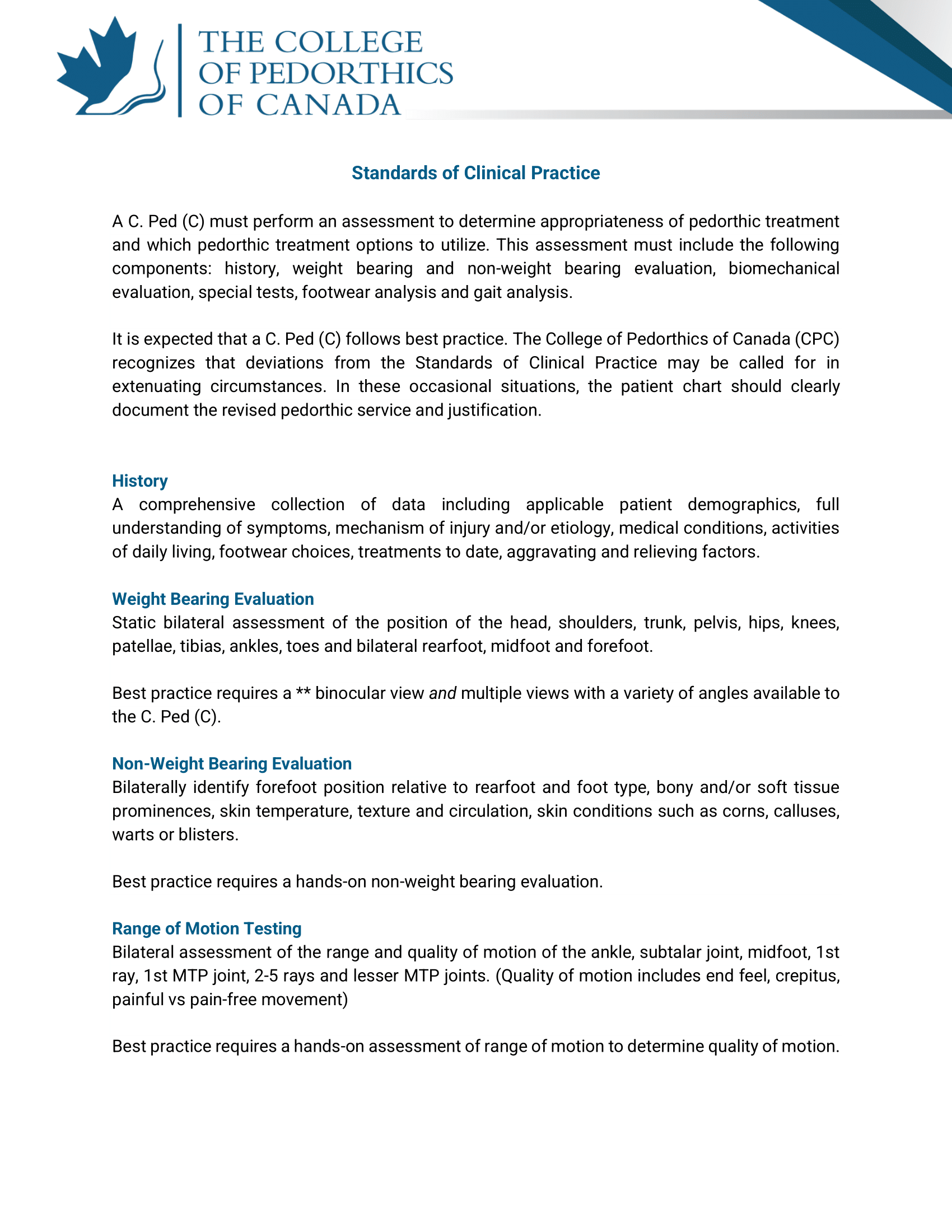The CPC is continuously dedicated to focusing on the requirements & competencies of a C. Ped (C).
Upon certification, a Canadian Certified Pedorthist, C. Ped (C), possesses the below 9 competencies:
An advanced understanding of systems integration of functional anatomy, biomechanics and physiology during human movement. Analysis of how growth and development impacts systemic function, foot type differences and classifications.
An understanding of the important principles of professionalism, communication and confidentiality. An appreciation of both the Pedorthic Association of Canada and The College of Pedorthics of Canada, and an understanding of how ethical conflicts and resolutions impact pedorthic practice. An understanding of the limits of the C. Ped (C) scope of practice and how pedorthics fit within the health care model of Canada. A vast knowledge of pedorthic lab and public health safety measures.
Critical appraisal skills of academic research on pedorthic related topics, specifically: the fundamentals of clinical assessment, footwear, and foot orthoses. An understanding the biopsychosocial model of pain and how custom footwear fits within the C. Ped (C) scope of
practice.
A comprehensive overview of pedorthic related medical conditions and injuries including: understanding the signs and symptoms, medical and injury pathology, assessment and use of special tests and differential diagnoses.
A comprehensive overview of pedorthic related diseases including: understanding the signs and symptoms, disease pathology, assessment and use of special tests and differential diagnoses.
A theoretical & applied understanding of non-weight bearing, static weight bearing and dynamic weight bearing (gait) assessments. The 6 phases of gait are outlined, including; linear and angular kinetics and kinematics and muscle activity throughout each phase of the gait cycle.
A practical ability to identify abnormal static stance and dynamic gait assessments and understand the resultant pathomechanical changes caused by anatomical variants, medical conditions, injuries and diseases.
A theoretical & applied understanding of different casting methods, pedorthic lab materials and footwear/orthosis modifications based on rationale from the assessment results and patient goals. An understanding of principles of foot orthoses design and technological advancements within the pedorthic industry.
An ability to develop a pedorthic treatment process, derived from a patient-centered assessment through synthesizing results into a comprehensive treatment plan. Recognizing the importance of patient education and shared decision making in achieving treatment goals, verified by ongoing evaluation and refinement ofthe treatment plan.

 C. Ped (C) Competencies PDF
C. Ped (C) Competencies PDF